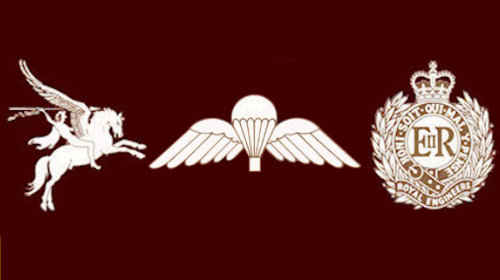
Operation Freshman
The operation Freshman Project and a visit to Stavanger by the Family of Sapper George Simkins
The Operation Freshman Project
By Dr Bruce A. Tocher
The successful attack on the Heavy Water facility at Vemork in Norway in February 1943 is rightly regarded as one of the most daring special forces raids of WWII. Over the years many books have been written about this raid, Operation Gunnerside, and it has been portrayed in films (The Heroes of Telemark, starring Kirk Douglas), television series (The Heavy Water War) and numerous documentaries. However, what is less well known is that there was an earlier attempt to destroy this target. This raid, Operation Freshman, which was launched on the 19th November 1942, ended in tragedy with 41 of the 48 soldiers and airmen involved losing their lives.
Several books have been published in which Operation Freshman is described, e.g., by Richard Wiggan (1986) and Jostein Berglyd (2005). In 2011, Ion Drew et al. published Silent Heroes which, in addition to the details of the raid, also provided a unique insight into the personal lives of the individual servicemen and their families, and contained information based on interviews, correspondence, and meetings with surviving relatives and ex-servicemen who had connections to the operation. At the time of publication, however, details of only some of the men were available. Efforts are now being made to address this gap and to publish a new book on Operation Freshman which includes information on all of the men who took part in the mission.
With this in mind, The Operation Freshman Project is trying to trace any surviving relatives or people who have stories or anecdotes concerning the servicemen who participated in the raid, or who were involved in the planning, training and support roles, and who may have photographs, letters or other documentary information relating to the servicemen. The idea is to tell the story of these incredibly courageous young men through their lives, and lives of their families, rather than more conventional histories which focus primarily on the events themselves.
Since the start of 2020, the project has managed to establish contact with relatives of 38 of the 48 soldiers and aircrew who took part in Operation Freshman, as well as families of some of the Norwegians involved. This effort is ongoing.
In the Autumn of 2022, to mark the 80th Anniversary, a total of 67 Freshman relatives spent 8 days in Norway visiting the various sites connected with the raid. This included visits to the three Commonwealth War Grave sites (Oslo, Stavanger and Helleland), as well as the three crash sites, execution sites, prisons, and the Heavy Water Cellar at Vemork. The visit culminated in a reception at the British Embassy in Oslo.
OPERATION FRESHMAN
In July 1942, the British War Cabinet decided to try to destroy the heavy water production facilities at the Norsk Hydro facility near Vemork, Norway. The reason was the concern that the heavy water was being used as part of Nazi Germany´s program to develop a nuclear bomb. After much discussion, it was decided to use specially trained Royal Engineers to carry out the task. They were to be flown to a landing site on the Hardanger Plateau, near the Vemork facility, using two Horsa gliders, each towed by a Halifax bomber.
The Royal Engineers who took part were all volunteers. Twenty men came from the 9th (Airborne) Field Company and ten from the 261st (Airborne) Field Park Company.
On the evening of November 19th, 1942, despite some misgivings regarding the weather over the objective, two Halifax bombers, each towing a Horsa Glider took off from RAF Skitten, near Wick in NE Scotland. On board each glider were 15 Royal Engineers, and two pilots. Their top-secret mission was code-named Operation Freshman.
Waiting near the target zone were a group of four Norwegians from the Special Operations Executive, codenamed Grouse, who had parachuted into the area some weeks earlier. Their primary mission was to light flares on the planned landing zone on the Hardanger Plateau, then guide the engineers to the target – the Norsk Hydro heavy water facility.
Tragically, due to failures in the navigation and guidance systems, and poor weather, the aircraft failed to identify the landing zones and were forced to turn back. On the return journey, ice began to build up on the tow ropes and the increased weight began to seriously affect the flight performance, as the planes lost altitude. At a point over southwest Norway, the tow rope between Halifax A and its glider snapped and the released glider crash-landed in Fylgjesdalen, a steep mountain valley near Lysefjord in Rogaland. Halifax A, made it back safely to Scotland, extremely low on fuel.
Of the 17 men onboard Glider A, eight were killed on impact. The dead were initially buried near the site of the crash, but at the end of the war, their bodies were recovered and reinterred in the Commonwealth Grave Section at Eiganes Cemetery, Stavanger.
 |
Original burial site of the 8 men killed when Glider A crashed in Fyljesdalen, Lysebotn, Norway. |
Four, badly-injured survivors from Glider A, were brutally murdered by the Gestapo in Stavanger sometime on the 23/24th November, 1942. Their bodies were then weighted down with rocks and dumped at sea off the coast of Stavanger, Norway. In 1985, a special memorial was raised to these four men with no known grave in Stavanger.
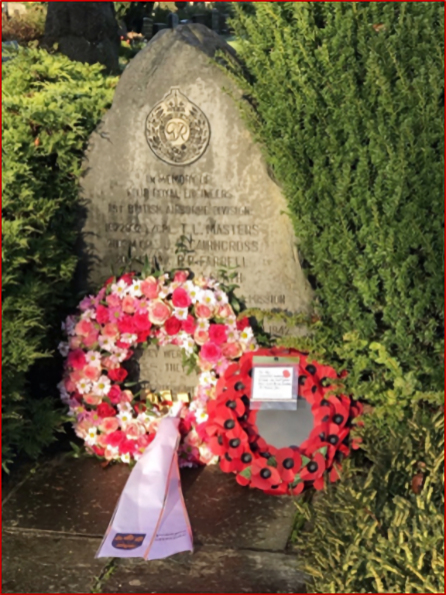 |
Memorial to the four Freshman soldiers with no known grave, Eiganes Cemetery, Stavanger, Norway. |
The five remaining soldiers from Glider A, were held in the Gestapo Prison in Lagårdsveien in Stavanger for a number of days before being transported to the concentration camp at Grini, near Oslo. The Grini records indicate that they entered the camp on the 29th November. According to statements made at the War Crimes Trials, the men were interrogated at both Grini and the Gestapo Headquarters in Oslo during the period of time they were held in captivity. On the 19th January, 1943, they were taken out of Grini and transported to Trandum Wood, north of Oslo where they were executed by firing squad.
 |
Grave 9, Trandum Wood, near Oslo, where Sapper Blackburn was originally buried before reburial in the Commonwealth Grave in Oslo West Cemetery. |
The bodies were initially buried in an unmarked grave but were recovered by the Norwegian authorities in 1945 and reburied in the Commonwealth Grave at Oslo West Cemetery.
The fate of Combination B was almost certainly similar to Combination A, in that at some point the tug aircraft and its glider became separated. However, in this case, both glider and tug crashed near Helleland in southwest Norway. The seven-man crew of the Halifax were killed instantly on impact. They were initially buried in a shallow grave close to the crash site on Hestafjellet but were subsequently reinterred in the Commonwealth graves plot in Helleland Churchyard, Rogaland, Norway at the end of the war with full military honours.
 |
Commonwealth Graves for Halifax B aircrew, Helleland Churchyard, Norway. |
Three men, including both pilots, were killed when Glider B crashed on Benkja Mountain. Fourteen survivors, surrendered to the German Army and later that same day, the 20th November 1942, they were led one by one to an area outside the German Army camp at Slettebø (near Egersund) and executed by firing squad.
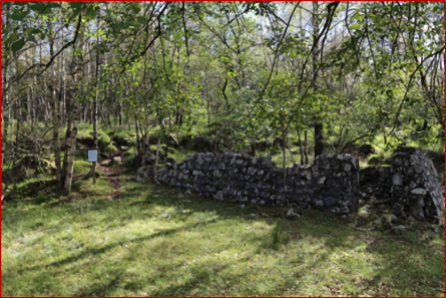 |
Execution site of 14 British soldiers from Operation Freshman at Slettebø Camp, near Egersund, Norway. |
The bodies of the men were buried that evening in an unmarked grave in the sand dunes at Brusand. However, a local Norwegian secretly observed the burial and was later able to alert the Allied Authorities to the location.
At the end of the war, the remains of most of the soldiers were reinterred at the Commonwealth Grave section in Eiganes Cemetery in Stavanger where remembrance ceremonies are still held each year to honour their sacrifice.
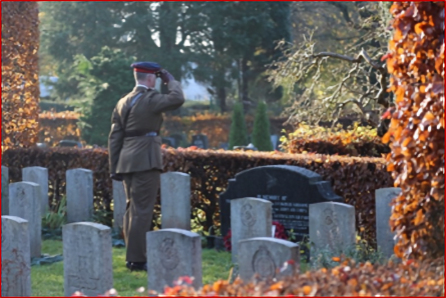 |
Remembrance Sunday 2020, Commonwealth Grave Section, Eiganes Cemetery, Stavanger, Norway. |
Due to the secrecy surrounding the mission, very little information was provided to the families of the servicemen at the time, other than that they were missing. A short news article was released by the Germans shortly after the raid saying that a number of aircraft had landed in Norway and that all of the soldiers on board had been engaged and killed to the last man. However, it was not until after the war that true horror of the story emerged!
Below is a link to a lecture I gave at the Royal Engineers Museum in 2022 to mark the 80th Anniversary of the raid. I will be giving another lecture at the Army Flying Museum near Andover in November 2024
https://www.youtube.com/watch?v=w6eX6gM6xVg
Visit to Stavanger by the Family of Sapper George Simkins
By Dr Bruce A. Tocher
I had the great honour and privilege to host a visit to Stavanger, Norway last week of the family of Sapper George Simkins, 261 (Airborne) Field Park Coy., Royal Engineers, who was one of the 41 men killed during Operation Freshman.
Sapper Simkins´ son, Bob, his granddaughters Karen and Linda, and other close family members took part in a memorial visit to Eiganes on Thursday the 11th of April. Also present were Thomas Falck, the British Consul in Stavanger, Lieutenant-Colonel Piers Noble, representing NATO´s Joint Warfare Centre, and Warrant Officer Jørn H. Johansen of the Norwegian Home Forces.
This was 82-year old Bob´s first visit to Norway to see his father´s grave and was a truly moving occasion for all present. A journalist from the Norwegian news service, NRK Rogaland was also in attendance and recorded a personal interview with Bob which was broadcast on Norwegian television the same evening. Click this link to view the broadcast -
https://tv.nrk.no/se?v=DVFJ20041124&t=455s
The Simkins family and official representatives were joined at Eiganes by members of two Norwegian families, the Helmikstøl´s and Espedal´s, who both played key roles in the events following the crash of the glider in which Sapper Simkins was killed around midnight on the 19th of November 1942, during Operation Freshman. Bob and the other family members were delighted to be able to thank them for their families´ care and compassion following the crash.
I gave a short address covering the events of Operation Freshman, followed by a speech from the British Consul on the close co-operation and friendship of Norway and the U.K during WWII. Lieutenant-Colonel Noble than talked about the courage and sacrifice of Sapper Simkins and the other members of the Airborne Forces, drawing on his own personal experiences in the military.
Lieutenant-Colonel Noble then laid a wreath on behalf of the Commander, Major General Piotr Malinowski and staff of the NATO Joint Warfare Centre, Norway with the following dedication: -
Sapper George Simkins
We follow in the footsteps laid by the brave,
Your eternal sacrifice will always be remembered
May you rest in Peace
Warrant Officer Jørn H. Johansen also laid a wreath, followed by floral tributes from the Simkins family.
The family expressed their sincere gratitude to all present, the Commonwealth Graves Commission for their care in looking after the grave of their relative and his comrades, and the Norwegian people for their continued acts of remembrance for the Allied fallen during WWII.
After the ceremony at Eiganes, the group had lunch, then I gave a presentation of Operation Freshman with special focus on Sapper Simkins. During the presentation, Lt.-Col. Noble presented Bob with a Paratrooper´s "Wings" as a personal memento of the occasion.
SAPPER GEORGE SIMKINS
Sapper George Simkins; Service No. 1884423; Age 30, 261 (Airborne) Field Park Company, Royal Engineers, from Romford, Essex, England.
Simkins enlisted in the Royal Engineers on the 20th December 1939 and joined the 261st Field Park Coy., R.E. in February 1940. On the 19th October 1942, he, together with around 30 other Royal Engineers, volunteered for a special mission, the details of which were not given to the men at the time. This mission was Operation Freshman, the Allies first glider borne raid of WWII, which had the goal of destroying the Heavy Water production facility at Vemork in Norway. Heavy Water was a key component in the attempts to develop an atomic bomb.
The raid had a tragic outcome and 41 of the 48 men who took part lost their lives. Sapper Simkins was one of eight men killed when his Horsa glider, DP349, crashed near midnight on the 19th November, 1942, in Fylgjesdalen, Norway. The casualties were initially buried near the scene of the crash, but after the war their bodies were recovered and taken to Stavanger where they were reburied with full military honours in the Commonwealth Grave section at Eiganes Cemetery.
"We will remember"
Dr. Bruce A. Tocher
THE OPERATION FRESHMAN PROJECT
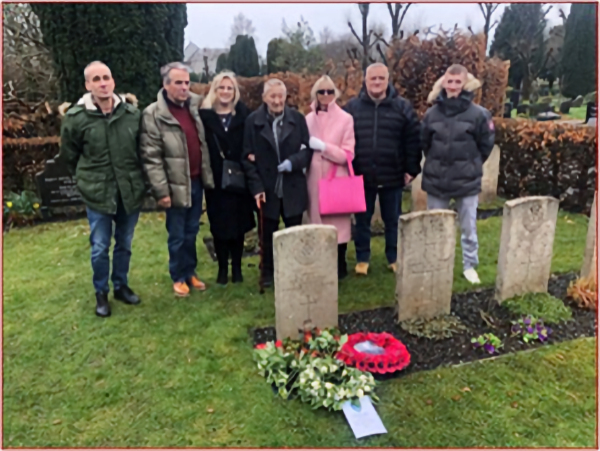 |
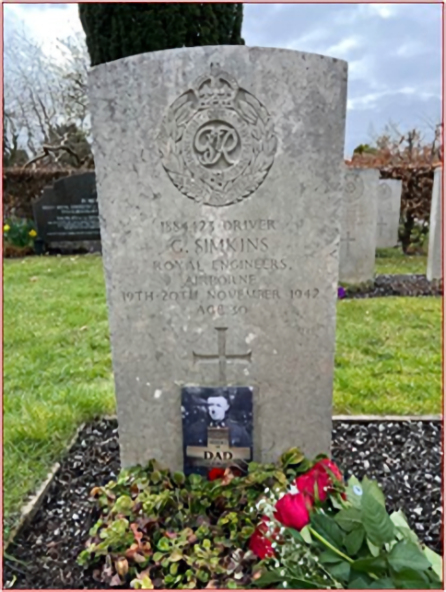 |
